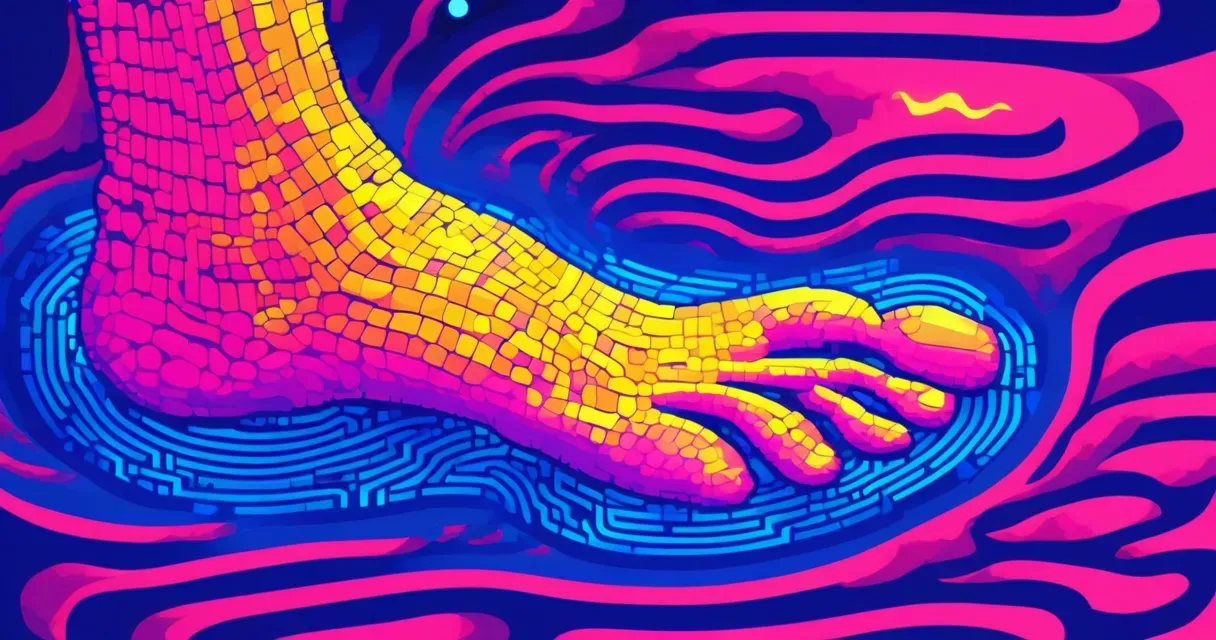
Footprint-Based Biometric Identification Gains Recognition in Security
/ 4 min read
Quick take - Human footprints are increasingly recognized for their potential in personal identification and crime scene investigations, offering a novel biometric method that complements traditional techniques while facing challenges related to accuracy, privacy, and technological integration.
Fast Facts
- Human footprints are emerging as a valuable biometric identification method, with unique ridge patterns useful for identity documents and crime scene investigations.
- Footprint-based identification is a newer technique compared to traditional biometrics like fingerprints and facial recognition, with a low mismatch probability of 1 in 1.27 billion.
- Gait analysis, influenced by various factors, is being explored for applications in healthcare and security, with recognition rates ranging from 64% to 99.6%.
- Continuous monitoring and non-invasive methods enhance security in access control and cybersecurity, offering resistance to spoofing compared to traditional passwords.
- Challenges such as privacy concerns, technological limitations, and the need for larger datasets must be addressed for the effective implementation of footprint and gait recognition systems.
The Role of Footprints in Personal Identification
Human footprints, characterized by unique ridge patterns, are increasingly being recognized for their potential in personal identification. These patterns are valuable in various identity documents, including AADHAR cards, passports, and driving licenses.
Footprints in Crime Scene Investigations
Footprints and barefoot prints are playing a critical role in crime scene investigations, serving as vital evidence. This footprint-based biometric identification is a relatively new technique compared to traditional methods such as fingerprints, retina scans, iris recognition, and facial recognition.
Despite its novelty, footprint-based identification is gaining traction. The historical use of fingerprints for legal purposes dates back to 1858 in India, initiated by Sir William James Herschel. Edward Henry developed a fingerprint classification system in 1901 that achieved global acceptance.
Despite advances in biometric systems, challenges such as identity theft, technological limitations, and false matches persist. Enhancing the accuracy of identification systems can be achieved by combining multiple biometric traits.
Forensic Podiatry and Gait Analysis
Forensic podiatry applies footprint and gait analysis in criminal investigations. The likelihood of a mismatch in unique footprint patterns is estimated at 1 in 1.27 billion. Gait recognition employs methods such as invariant gait recognition, hidden Markov models, and template matching.
Gait analysis can be influenced by factors like clothing, walking surfaces, and emotional state. Various techniques for footprint recognition include pressure mat sensing, eigenfeet analysis, neural networks, and principal component analysis (PCA) or independent component analysis (ICA).
Depending on the method used, recognition rates for footprint identification can range from approximately 64% to 99.6%. Advanced techniques such as wavelet analysis, fuzzy neural networks, and Doppler radar are being explored to enhance recognition capabilities.
Footprint data can be captured through mats, scanners, and pressure sensors, with applications in suspect identification and identity verification. Gait analysis also finds relevance in healthcare, aiding in the diagnosis of conditions and fall prevention.
Challenges and Future Directions
Foot dimensions, including toe length and heel width, can provide insights into physical stature and reveal genetic and environmental influences. Current methods often grapple with limited datasets, impacting their generalizability.
Recommendations for improvement emphasize the importance of combining multiple biometric traits and utilizing larger datasets. The implementation of footprint and gait recognition can bolster physical security in access control for sensitive areas.
Non-invasive gait recognition allows for monitoring entry points without physical contact, thereby reducing vulnerabilities. These recognition methods can complement other biometric systems to enhance multi-factor authentication.
Continuous monitoring provides ongoing identity verification in secure environments. In cybersecurity, footprint and gait data can assist in identifying perpetrators during investigations.
Gait patterns from video footage can potentially be integrated into CCTV systems for suspect tracking. Footprint-based systems can enhance security in smart locks and IoT devices utilized in homes and workplaces.
They offer protective measures for operations in cyber-physical systems like factories and research facilities. Compared to traditional passwords or PINs, gait and footprint recognition are more resistant to spoofing.
The combination of footprint data with digital biometrics can create additional security layers for critical systems. However, the scalability of these recognition systems necessitates substantial data and infrastructure to facilitate widespread adoption.
Environmental factors, such as footwear and walking surfaces, can affect the accuracy of recognition systems. Privacy concerns regarding the collection and storage of biometric data raise issues of potential misuse.
The integration of physical biometric systems into existing cybersecurity frameworks poses technological challenges. These challenges must be addressed for effective implementation.
Original Source: Read the Full Article Here


